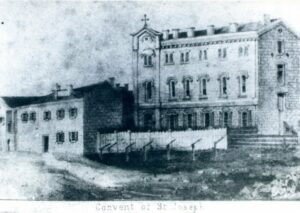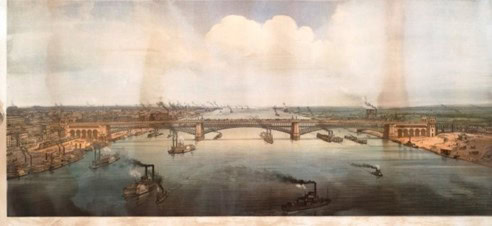This year marks the 150th anniversary of the completion of the Eads Bridge in St. Louis. To celebrate the iconic St. Louis landmark, the Missouri History Museum is running the “Eads Bridge at 150” exhibit until May 11, 2025. The Carondelet Consolidated Archives discovered our own connection to the Eads Bridge.

Sister Mary Francis Joseph Dillon (Anne Eliza Dillon) was the first American Postulant, having taken vows in 1838. Sister Mary Francis Joseph was the daughter of prominent businessman, Patrick McMasters Dillon, but she chose to live a life of poverty as a Sister of St. Joseph of Carondelet. She spent her time as a sister teaching English. Unfortunately, she died of consumption in October of 1842, which made her the first death among Sisters of St. Joseph of Carondelet in the United States.
Sister Mary Francis’s connection to a St. Louis landmark happened after her death, when her older sister, Martha Nash Dillon, married James Buchanan Eads in 1845. James Eads was a self-made man, with no formal engineering training. He made a name for himself by designing boats and diving bells that allowed him to retrieve goods from sunken river boats up and down the Mississippi.
During the Civil War, Eads’ Union Marine Works, located in Carondelet, Missouri, designed and built several of the ironclad ships for the Union Navy. This contribution to the navy helped the Union dominate the major rivers of the United States. It was after the Civil War that Eads built the St. Louis landmark, which is still used today.
Eads put his acquired engineering knowledge to use when he designed and built the Eads Bridge across the Mississippi, which was completed in 1874. It was the longest arch bridge and first bridge of that size to use steel as its primary material, as well as being the first bridge built using the cantilever method. Eads also designed pressurized construction chambers which allowed him to anchor the bridge in the bedrock below the riverbed.
